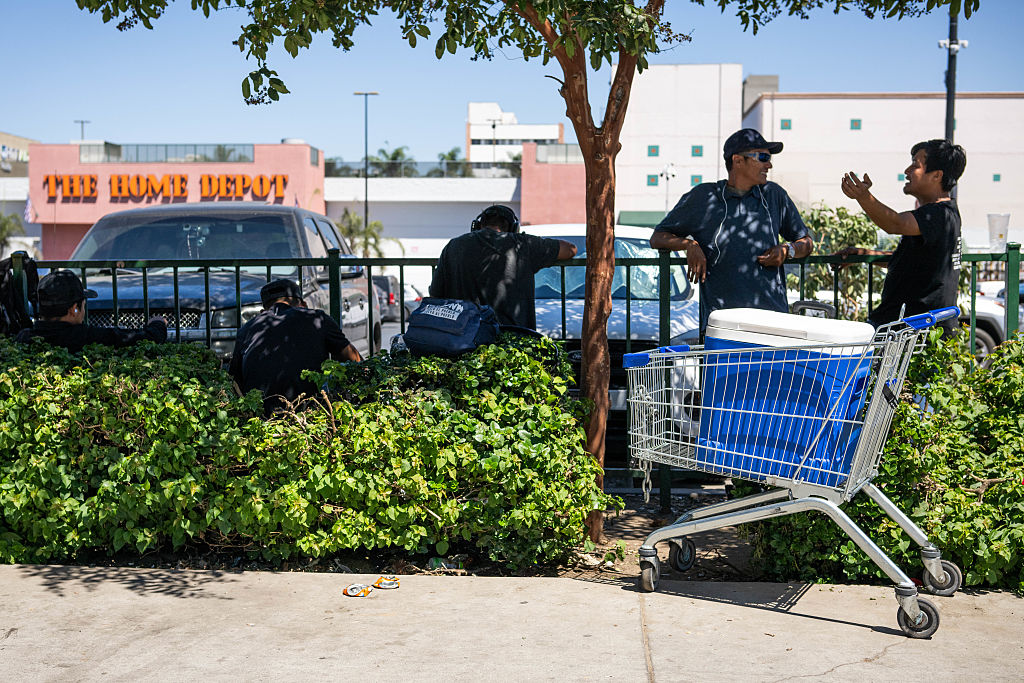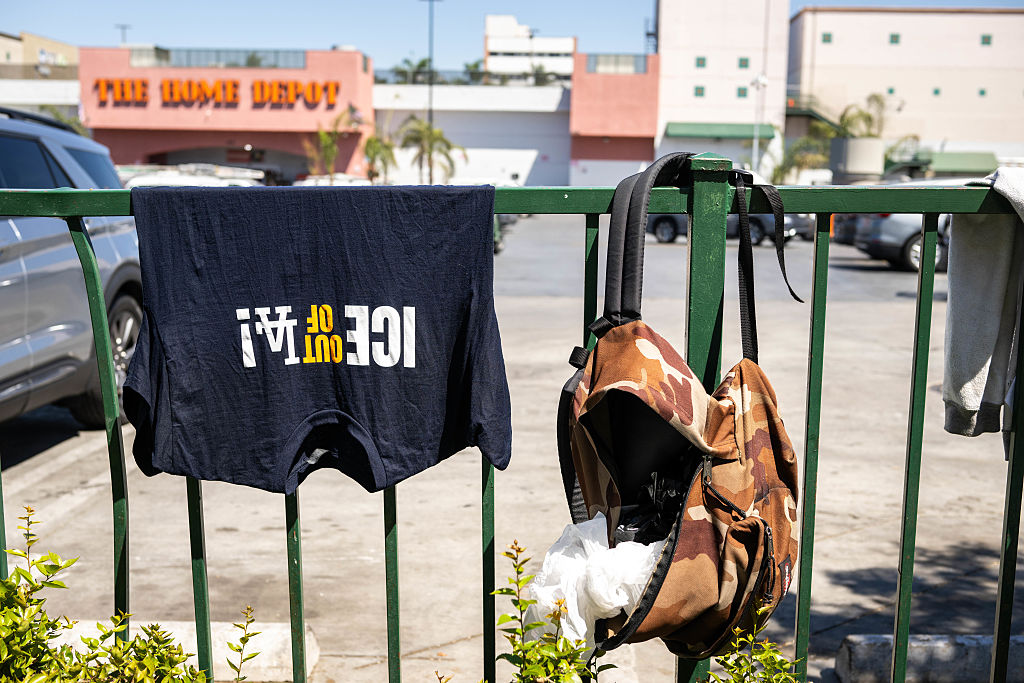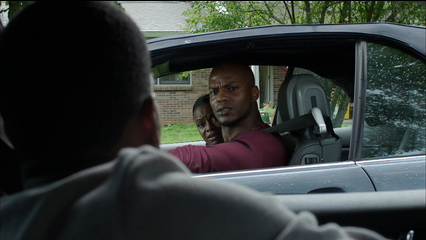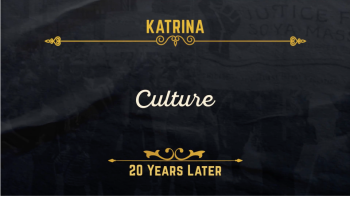The Supreme Court Rules ICE Can Engage In Racial Profiling

The Supreme Court has once again placed itself at the center of America’s ongoing battle over race, immigration, and constitutional freedoms.
In a controversial 6-3 ruling divided along ideological lines, the Court overturned a lower-court order that had blocked Immigration and Customs Enforcement (ICE) from conducting “roving” raids in Los Angeles. At the heart of the decision lies a dangerous precedent that now allows the government to stop, question, and detain individuals based solely on their ethnicity, language, occupation, or physical location.
The decision, which overturns the lower-court order issued in July by U.S. District Judge Maame Ewusi-Mensah Frimpong, which barred ICE from engaging in stops based on legally questionable criteria such as race, accent, or congregating in spaces where day laborers are known to gather. Judge Frimpong, who was appointed by President Joe Biden, said in her ruling that the court needed to decide whether the plaintiffs could prove the Trump administration “is indeed conducting roving patrols without reasonable suspicion and denying access to lawyers.”
But in an emergency 31-page ruling published Monday, the Supreme Court’s six conservative justices lifted restrictions against aggressive immigration enforcement tactics by federal agents. Agents are now free to stop people on the basis of appearing Latino, speaking Spanish, working in manual labor, or simply standing outside a Home Depot or car wash. For many in Los Angeles, where nearly half the population is Hispanic, the ruling turns everyday life into a high-stakes gamble with law enforcement.
While the Court provided no detailed explanation for its decision, which came accompanied with a sharp dissent from the three liberal judges, Justice Brett Kavanaugh issued a concurrence defending the ruling and arguing that while ethnicity alone cannot constitute probable cause, a combination of factors—such as language, type of work, and location—could amount to “reasonable suspicion” of undocumented status. He also insisted that stops would be brief, with citizens quickly released upon showing proof of status.
“To be sure, I recognize and fully appreciate that many (not all, but many) illegal immigrants come to the United States to escape poverty and the lack of freedom and opportunities in their home countries,” Kavanaugh wrote. “But the fact remains that, under the laws passed by Congress and the president, they are acting illegally by remaining in the United States – at least unless Congress and the president choose some other legislative approach to legalize some or all of those individuals now illegally present in the country.”
Responding to the ruling for the Trump Administration, Department of Homeland Security spokesperson Tricia McLaughlin noted that the mission to arrest would continue full throttle.
“This is a win for the safety of Californians and the rule of law,” McLaughlin said. “DHS law enforcement will not be slowed down and will continue to arrest and remove the murderers, rapists, gang members, and other criminal illegal aliens.”

Writing in a fiery dissent joined by Justices Elena Kagan and Ketanji Brown Jackson, Justice Sonia Sotomayor dismissed the majority’s logic as a thin veil for racial profiling.
“We should not have to live in a country where the government can seize anyone who looks Latino, speaks Spanish, and appears to work a low-wage job. Rather than stand idly by while our constitutional freedoms are lost, I dissent.”
Sotomayor noted in her dissent that the “on-the-ground reality” of immigration arrests cuts against the federal government’s fears that a court ruling could chill authorities’ ability to detain and deport undocumented migrants.
“The evidence in this case, however, reveals that the government is likely to continue relying solely on those four factors because that is what agents are currently authorized and instructed to do,” Sotomayor continued.
Justice Sotomayor, who made history as the first Hispanic justice to serve on the Supreme Court, added that the high court’s ruling posed a threat not just to undocumented foreigners but to Americans of Hispanic descent.
“The Government, and now the concurrence, has all but declared that all Latinos, U. S. citizens or not, who work low-wage jobs are fair game to be seized at any time, taken away from work, and held until they provide proof of their legal status to the agents’ satisfaction,” she wrote.
While the ruling formally applies to Los Angeles and surrounding counties, its implications reach far beyond California.
Immigration advocates warn that federal officials will see the decision as tacit approval to deploy similar tactics nationwide. Already, reports out of Chicago suggest ICE has begun “operation Midway Blitz,” modeled after Los Angeles raids, targeting Latino communities on the city’s Southwest Side.

Civil rights leaders fear that the ruling may become the template for normalizing racial profiling under the guise of immigration enforcement. As Nicole Hallett, Director of the Immigrants’ Rights Clinic at the University of Chicago, noted: “I think this opinion will be read by ICE as giving them carte blanche because they believe that they have the Supreme Court’s support in these enforcement tactics.”
California Attorney General Rob Bonta called the Court’s action “disappointing,” pointing out its glaring inconsistency with the Court’s 2023 decision banning race-conscious college admissions.
“How they prevent the use of race to tackle discrimination, but allow the use of race to potentially discriminate is troubling and it is disturbing,” Bonta said.
This contradiction underscores the broader problem: the Supreme Court has embraced a legal framework where race is barred as a tool to promote diversity but welcomed as a tool for policing and deportation. In practice, this emboldens law enforcement to treat entire communities as suspects while stripping citizens of equal protection.
For Hispanic Americans, citizens and immigrants alike, the ruling sends a chilling message: your identity is now grounds for suspicion. Carrying proof of citizenship becomes less of a formality and more of a survival tactic, with everyday activities like waiting for a bus, shopping, or even going to work being a risk of potential encounters with armed federal agents.
For critics, the decision represents not just a setback in immigration policy but a step backward in civil rights.
“Today’s Supreme Court order puts people at grave risk, allowing federal agents in Southern California to target individuals because of their race, how they speak, the jobs they work, or just being at a bus stop or the car wash when ICE agents decide to raid a place,” Cecillia Wang, National Legal Director of the ACLU, said. “For anyone perceived as Latino by an ICE agent, this means living in a fearful ‘papers please’ regime, with risks of violent ICE arrests and detention.”
The Court’s ruling has reignited fears that racial profiling will become an institutionalized practice, sanctioned by the highest judicial authority, but it is not the final word in the case, and litigation will continue in the lower courts. But, in the meantime, ICE is empowered to resume practices previously deemed unconstitutional, emboldening an already aggressive enforcement strategy tied to President Donald Trump’s mass-deportation agenda.
What begins in Los Angeles rarely stays there, and the Supreme Court’s decision risks opening the floodgates for systemic discrimination against Black and Brown communities everywhere. Racial profiling isn’t just threatening immigrants, but the very principle of equal justice under law.
SEE ALSO:
Federal Judge Rules ICE Racially Profiles
ICE Agents Claim Assaults Are Reasons For Masks, But That’s A Lie
Department Of Homeland Security Claims ICE Doesn’t Engage In Racial Profiling
Kristi Noem Tells Reporter Not To Talk About ICE’s Racial Profiling
The Supreme Court Rules ICE Can Engage In Racial Profiling was originally published on newsone.com













